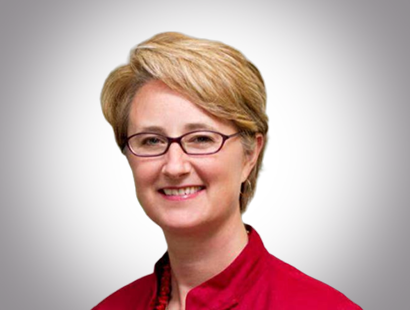

Clancey
Thriving in China's high-pressure medical devices industry: An interview with GloCoach's Clancey Houston.
By Rob Abbanat
August 2019
Med-tech--including medical devices and pharmaceutical--are among the fastest-growing and most challenging industries in China. I recently caught up with GloCoach's Clancey Houston, a former healthcare executive, to better understand the unique pressures facing leaders in this segment, and how she helps them to succeed.
Rob: What are some of the biggest challenges you've seen facing med-tech leaders you've coached?
Clancey: That's a great starter question. All the coachees I work with are eager and motivated to get their businesses--and their careers--to the next level. But the path is not easy.
To begin, I think it's necessary to distinguish between local startups and MNCs (multinational corporations operating in China). Both must navigate a regulatory environment that is changing almost on a daily basis. This encompasses a range of systemic issues including waste, corruption and the rapid evolution of policies and regulation. This industry is extremely regulated and policy-driven, which drives different implications for different companies. One of the most common is the cost vs. quality paradigm.
Leaders working for MNCs face additional pressures stemming from matrix management structures, with both a functional reporting line to someone overseas plus a China-specific business owner. With this reporting structure they are expected to manage to a functional strategy that is driven by global headquarters, plus the realities of managing to the constraints of the local environment. Historically, global HQ has viewed China as a top-line growth engine. With China's economy slowing, local realities have forced many managers to focus on the bottom line, all while dealing with a regulatory environment that is becoming increasingly restrictive. In essence, they have two bosses with different perspectives and conflicting priorities. This often puts local leaders in untenable situations that are less common for local startups.
Many of the managers I work with must spend excessive amounts of time educating their overseas colleagues about the realities of doing business in China and tending to visiting executives. This takes them away from from running their business. If they are in a cross-functional role, such as strategic marketing and government relations, their attention will be further divided. Life can get very stressful.
Also, with MNCs, the global leadership usually likes to see strategies fully mapped out before moving on them. But China is a market where people "launch and learn." This is tough for big MNCs. Those who have the ability to blend the two approaches have the best chances for success, in my view.
Rob: Given this very challenging environment, what are the common weak points among your coachees?
Clancey: All of them are driving to get to the next level, and some are proactively trying to shore-up their weak points. A common thread I see time and again is how to shift from tactical to strategic thinking. Essentially, they must learn to distill ideas and strategies down to something that resonates with their audience, and how to present it persuasively. The ultimate objective is to win the support of all the key stakeholders for their vision of get to the next level.
Almost always, the root of the problem is a communication issue. The coachee is struggling to define his or her audience; who are the key stakeholders, who should be engaged beyond the team and boss; how to build allies in the organization, and how to work with people who have very different perspectives.
Rob: What techniques do you use to help your coachees address these issues?
Clancey: Well, the first step is usually to pause and step back to see the whole picture from a less emotional perspective. Then we start to distill the core challenges to map out what is urgent and important, and clarify the barriers. I do a lot of scenario mapping with my coachees. We address each issue, one at a time, in a systematic manner. I'm always bringing them back to "what to communicate with whom."
Sometimes, the challenge is more tactical, like the pressure to score big when delivering an important presentation. Here we can work on very specific skills and techniques to achieve the goal.
Often times, I am working with somebody who is struggling to find their place. They may have been promoted into a new role, or may be new to the organization. To get them acclimated, I get them thinking like a pioneer. We focus on how to establish and build their credibility. This usually starts by recognizing their value to the organisation and the business. It also requires that they recognize the need to sell--themselves and their ideas--even if they aren't in a sales role. They must get recognition, support and buy-in.
Rob: How does your rich industry experience come into play when you are coaching?
Clancey: Well, in the interest of full disclosure, I am not a formally-trained coach. I have accumulated much success in coaching by leveraging my front-line operational experience. I've found this to be extremely appealing to both my coachees and their sponsor. What they are looking for experience sharing; lots of scenario role plays and what-if evaluation. "I was there before, so let me tell you how i handled it, what I did right and where I made mistakes." These are often the most valuable discussions.
For someone who is facing a particularly challenging situation, my ability to relate at the experiential level shows them they are not alone. There is a way to manage it, there is light at the end of the tunnel. I'll suggest how they might do things differently. The ability to share experiences in these situations is invaluable.
Rob: How does coaching in Life Sciences differ from other industries?
Clancey: Some industries in China have matured very rapidly. Life Sciences are still developing here. To begin, the dynamics of competition is very different: Life Sciences are very heavily regulated because it deals with human life. The (Chinese) government is highly motivated to insure that medical industry is providing high-quality care, and improving life. Not that this isn't true elsewhere, but it's at a different stage of development in China.
Rob: What results have you achieved with your coaching?
Clancey: Well, I can confidently say that I've seen improvement in all my coachees being able to articulate challenges and goals, and communicate them to the stakeholders who matter. Most of them achieve a break-thru moment around the 4th or 5th session where they step out of their own shoes and recognize what the person they're working for wants and needs. It's very different than focusing on what "I" need to get done each day.
Rob: What has been the impact on your coachees' career trajectories? For their team's results or company's results?
Clancey: I've worked with both large and small (independent) companies. With the MNCs, I've helped leaders to quickly come up to speed in new roles, helping them to successfully address internal resistance and win over their colleagues. Many have gone on to establish theirs as top performing business units in the entire organization. Here are a few specific cases.
Individual 1: One coachee I worked with needed support managing his relationship with HQ. In particular, he was desperate to communicate more effectively, with visiting executives. He wanted to upgrade the image he was projecting and signal his readiness to step up to the next level. He wanted to gain the credibility to consult with members of the global leadership team. My coaching focused on discerning the concerns and needs of the global team so that whenever he communicated with them, he was prepared with the appropriate content, demeanor and delivery. After 6 months of coaching, where we did a lot of role playing and reviewed specific situations, he began to receive excellent feedback. Within another 6 months he was empowered to grow his team, and convinced his bosses to allocate more budget. Since then his responsibilities have progressed beyond China into a global role.
Individual 2: In another case I was coaching a new hire whose role was desperately needed, but she was facing a lot of internal resistance. Part of the resistance came from the nature of her role, which required that she challenge the status quo. Naturally, some people were going to lose previously-vested power. To get her on the right track, I got her to focus on identifying and building a group of allies; individuals who would support and help her when needed. Then we came up with a strategy to get them on board one-by-one, and then execute a series of actions which enabled her to gain traction before any of the "nay-sayers" could speak up. She ultimately succeeded spectacularly with the new role and was quickly promoted.
Rob: Any closing thoughts?
Clancey: Much of what I coach is not unique to med-tech professionals. The key is, anyone who commits to being coached must do it regularly. We're all busy--with travel, meetings, fires to put out--and there is always a reason to say "I'm too busy", but getting the right coaching is really important. We must make for coaching on a regular basis. Time between sessions can quickly spread too far. A lot can happen in a month, so I recommend at least one session every 2 weeks. A fixed weekly time is best.
Additionally, a tough problem may require more than 6 months to resolve. It's important to set HR's expectations. Ultimately, the proper investment in the employee will pay huge dividends.
Clancey is an Executive Coach with GloCoach. Schedule a session with Clancey here.
*The name of the company and the coachee have been changed to protect their privacy.









